
Top: A young Pacific bluefin tuna
Centre: The opened body cavity of a young bluefin showing the internal organs and a pink fluke.
Bottom: Two photos of a Hirudinella fluke, contracted (left) and extended (right),
Hirudinella is a genus of stomach flukes which are usually associated with the Wahoo. But species in this genus can be found in a wide range of pelagic fishes, including the Pacific bluefin tuna 🧪
#Invertebrate
www.researchgate.net/publication/...
06.10.2025 04:42 — 👍 52 🔁 3 💬 1 📌 1

My friend who is studying in Germany gifted me this book. Thank you 🥺
04.10.2025 13:53 — 👍 0 🔁 0 💬 0 📌 0

<i>Forficuloecus pezopori</i>
Parasites are a major part of biodiversity, but they spend most of their time hidden in plain sight. Even with some animals that have been k...
Crouching Parrot, Hidden Louse:
The Kyloring (Pezoporus flaviventris) is a critically endangered species of Australian parrot, and it is host to Forficuloecus pezopori - a species of louse which lives only on the Kyloring and nowhere else.
#Invertebrate 🧪
dailyparasite.blogspot.com/2024/06/forf...
26.09.2025 01:53 — 👍 60 🔁 19 💬 1 📌 1

A Mister Twister Curly Tail Grub soft plastic fishing lure in chartreuse with red speckles
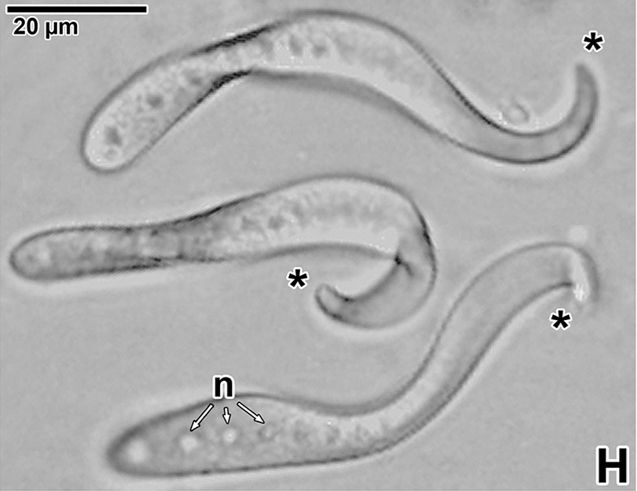
Composite micrograph showing the sequence of movement of a single detached Siedleckia nematoides parasite, shown as three separate individuals.
From Fig. 1H of the paper: Valigurova, A., Vaškovicová, N., Diakin, A., Paskerova, G. G., Simdyanov, T. G., & Kováčiková, M. (2017). Motility in blastogregarines (Apicomplexa): Native and drug-induced organisation of Siedleckia nematoides cytoskeletal elements. PLoS One, 12(6), e0179709.
https://journals.plos.org/plosone/article?id=10.1371/journal.pone.0179709
There's a species of apicomplexan parasite called Siedleckia nematoides which looks like microscopic version of those soft plastic grub fishing lure🧪
journals.plos.org/plosone/arti...
02.10.2025 23:53 — 👍 31 🔁 5 💬 0 📌 0
This is my first time seeing alive lernanthropid copepod (possibly Lernanthropus latis)!
27.09.2025 15:15 — 👍 4 🔁 1 💬 0 📌 0
Some little circus performers. #protistsonsky
20.09.2025 16:02 — 👍 41 🔁 7 💬 1 📌 0

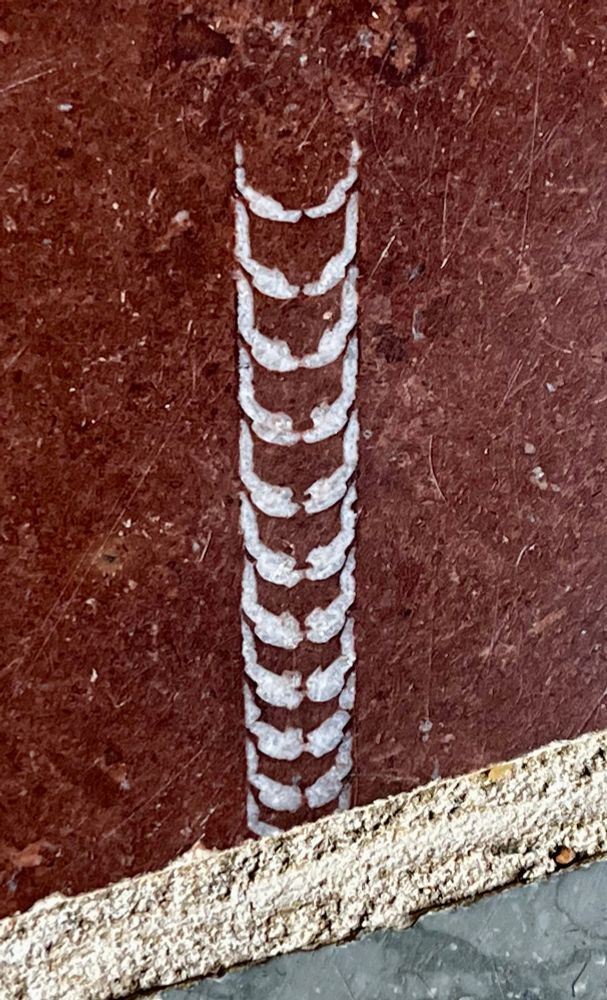
#MolluscMonday Photographed at Hampton Court Palace last week, orthocone nautiloids in paving slabs of Swedish Ordovician limestone. A microfault crosses the chambered phragmocone of one. The other fossil may represent a siphuncular structure but comments would be welcomed.
22.09.2025 07:06 — 👍 47 🔁 9 💬 0 📌 0

Transit in Kupang
12.09.2025 23:57 — 👍 0 🔁 0 💬 0 📌 0

Gambir train station at night. The Monumen Nasional could be seen at the background on left top
Stasiun Gambir
12.09.2025 16:41 — 👍 0 🔁 0 💬 0 📌 0
#WormWednesday
Two digeneans recovered from the GI-tract of a sciaenid host.
10.09.2025 09:34 — 👍 1 🔁 1 💬 0 📌 0

A new addition to my collection 👀
05.09.2025 07:11 — 👍 0 🔁 0 💬 0 📌 0
Looking forward to see that pictures Dr Johnson!
02.09.2025 15:15 — 👍 2 🔁 0 💬 0 📌 0

A dense accumulation of fossil belemnite rostra (including also some encrusting bivalves) from the Pliensbachian-Toarcian GSSP of Peniche Portugal (see https://doi.org/10.1098/rsos.190494).
Talking about another true #invertefest: belemnite "battlefields" or "Schlachtfelder". Despite the name, they are generally used to refer to dense accumulations of #fossil #cephalopod rostra, which can be formed under various mechanisms. Irrespectively, they are a great way to obtain large samples.
29.08.2025 10:50 — 👍 34 🔁 11 💬 2 📌 0
Now, I am wondering about their parasites too...
29.08.2025 10:32 — 👍 0 🔁 0 💬 1 📌 0

#FossilFriday. Silurian tabulate coral Heliolites. From the cutting room floor of 'Fossils. The Essential Guide’, which used a lower magnification image of the same fossil.
29.08.2025 05:49 — 👍 28 🔁 7 💬 0 📌 0
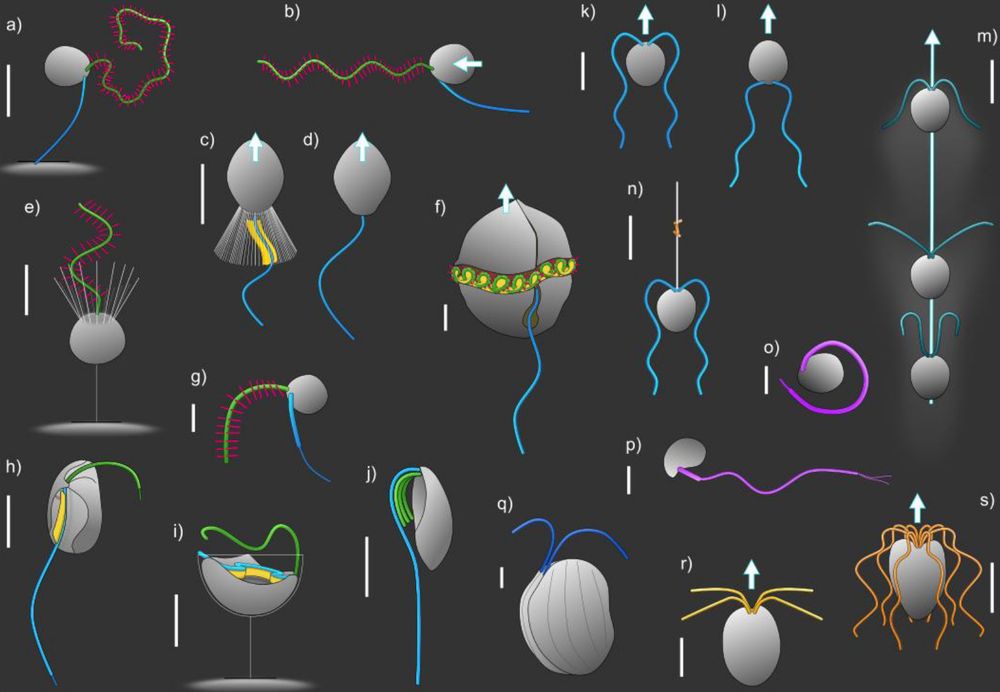
simple models of various microbial cells with diverse configurations of flagella
New #ISEPpapers! The fluid dynamics and functional diversity of the flagella of free-living flagellates orbit.dtu.dk/en/publicati...
#Protists #Microbes #FluidDynamics #Biophysics
28.08.2025 14:09 — 👍 23 🔁 6 💬 1 📌 0

Top: Illustration of a Myllokunmingia with a speculative ancestor of branchiurans attached to its flank.
Bottom: Illustration of a Yunnanozoon with a pentastomid attached to its gill opening
Ichthyostracan Origins
#Invertebrate #SciArt #PalaeoArt
23.08.2025 14:13 — 👍 50 🔁 9 💬 1 📌 0

A flyer for the next edition of the Palaeoverse Lecture Series, featuring a cartoon of an open laptop with the Palaeoverse logo on the back, and a picture of Amy Shipley, wearing a denim jacket and with sunglasses on her head, smiling into the camera
🚨Palaeoverse Lecture Series🚨
🗓️28th August 2025, 15:00 UTC🗓️
Join us for next week’s talk given by @sauropodlets.bsky.social from the University of Leeds, on “Modelling ancient food webs: ecosystem changes across the Pliocene marine megafaunal extinction” 🦈
Register here: bit.ly/palaeoverse-...
21.08.2025 09:44 — 👍 21 🔁 9 💬 0 📌 1
True, but maybe hard to design, hence the chemical shells aren't realistic 🤣
16.08.2025 09:05 — 👍 0 🔁 0 💬 0 📌 0
As someone who previously played War Thunder, the fridge magnets tempt me aggh
16.08.2025 06:29 — 👍 0 🔁 0 💬 1 📌 0

<i>Anelasma squalicola</i> (revisited)
A few months ago I wrote a Dispatch for Current Biology about a newly published study on Anelasma squalicola - a parasitic barnacle that...
The shark-sucker barnacle - Anelasma squalicola - is a barnacle with an unusual habit.
Instead of filter feeding on plankton, it has evolved to parasitise deep sea squaloid sharks such as lantern sharks and Greenland shark 🦈
#Invertebrate 🧪
dailyparasite.blogspot.com/2014/09/anel...
10.08.2025 13:19 — 👍 80 🔁 21 💬 2 📌 1
This is such a cool project!
14.08.2025 05:17 — 👍 0 🔁 0 💬 0 📌 0

<i>Myxobolus medusae</i>
Myxozoans are a group of single-celled parasites which had evolved from jellyfish-like ancestors, thus making them a type of single-celled ...
I've written a post about Myxobolus medusae - a myxozoan parasite that lives in the eyes of red-bellied piranhas.
Beauty might be in the eye of the beholder, but this microscopic medusa is in the eye of a piranha
#Invertebrate 🧪
dailyparasite.blogspot.com/2025/08/myxo...
13.08.2025 03:29 — 👍 95 🔁 27 💬 1 📌 2

Screenshot from the anime Ruri Rocks.
Nagisa sitting at her workstation while talking to Ruri who is standing in front of her, holding a newly published scientific paper.

Screenshot from the anime Ruri Rocks.
A tray holding various rocks and a box of Kimwipes

Screenshot from the anime Ruri Rocks.
Corner of a desk with stacks of haphazardly arranged piles of books and scientific papers on and next to it, along with a backpack leaning against it all.
I have to hand it to Ruri Rocks for nailing how a grad student's workstation looks like
23.07.2025 13:23 — 👍 53 🔁 20 💬 7 📌 2
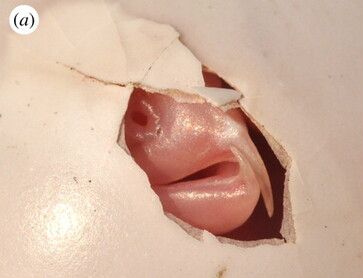
A hatching honeyguide with the hooked tip of its beak visible through the crack in the eggshell.
From this paper: https://royalsocietypublishing.org/doi/10.1098/rsbl.2011.0739
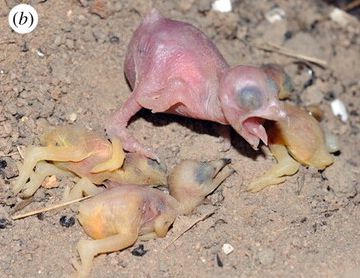
A honeyguide chick with three recently killed little bee-eater hatchling that it just killed.
From: https://royalsocietypublishing.org/doi/10.1098/rsbl.2011.0739
Honeyguides are natural-born killers - like cuckoos, they are brood parasites, and the first thing going through the mind of a honeyguide chick when it hatches from its egg is:
MURDER
royalsocietypublishing.org/doi/10.1098/...
🧪
28.07.2025 00:20 — 👍 71 🔁 15 💬 2 📌 2
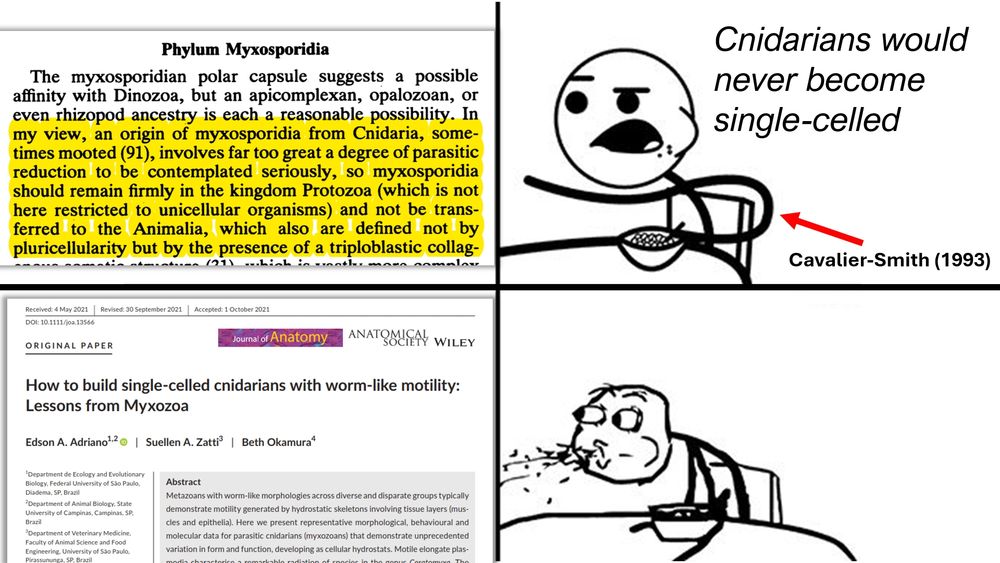
Cereal Guy meme.
Top panel is the Cereal Guy, indicated to be T. Cavalier-Smith, saying "Cnidarians would never become single-celled" and a section from the paper:
Cavalier-Smith, T. (1993). Kingdom protozoa and its 18 phyla. Microbiological reviews, 57(4), 953-994.
Which reads:
"Phylum Myxosporidia
The myxosporidian polar capsule suggests a possible affinity with Dinozoa, but an apicomplexan, opalozoan, or even rhizopod ancestry is each a reasonable possibility. In my view, an origin of myxosporidia from Cnidaria, some times mooted (91), involves far too great a degree of parasitic reduction to be contemplated seriously, so myxosporidia should remain firmly in the kingdom Protozoa (which is not here restricted to unicellular organisms) and not be transferred to the Animalia, which also are defined not by pluricellularity but by the presence of a triploblastic collagenous somatic structure (31)".
Bottom panel is Cereal Guy spitting out cereal, accompanied by the first page of the paper:
Adriano, E. A., Zatti, S. A., & Okamura, B. (2022). How to build single‐celled cnidarians with worm‐like motility: Lessons from Myxozoa. Journal of Anatomy, 240(3), 475-488.
From a lecture I'm currently writing about the history of #Invertebrate taxonomy.
Those myxozoans do be tricky 🧪
12.08.2025 02:53 — 👍 54 🔁 6 💬 4 📌 0
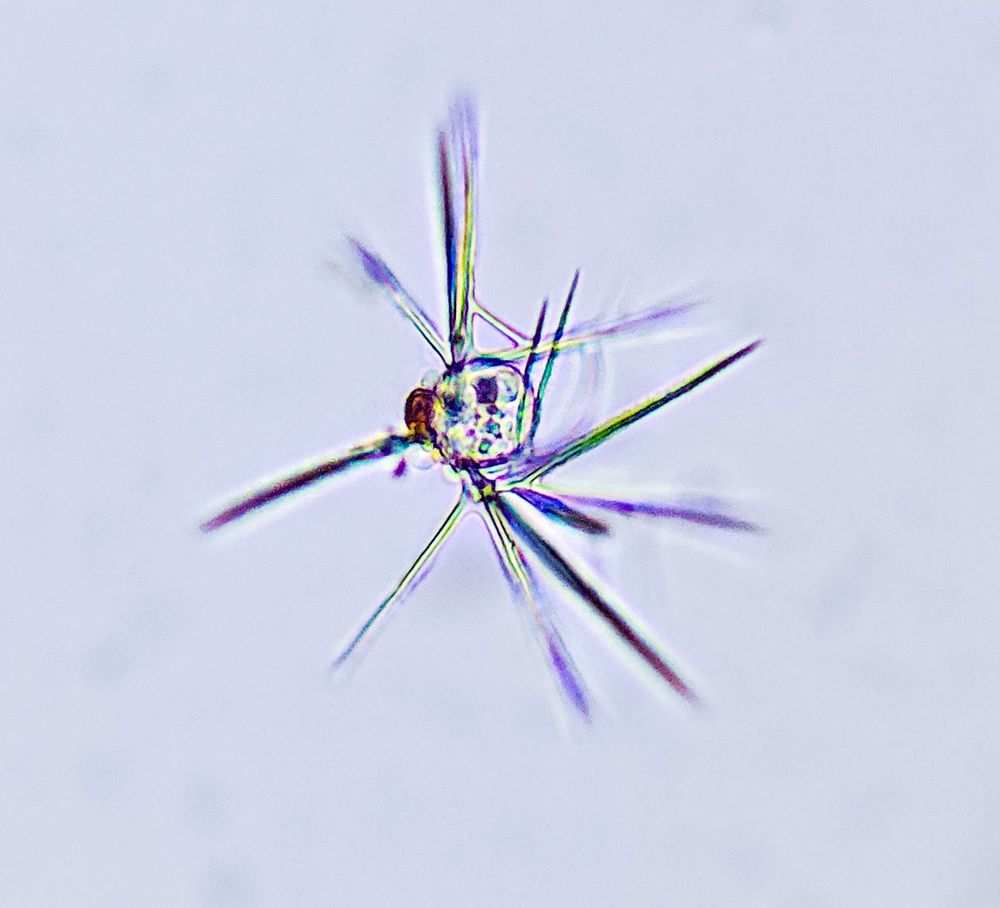
An image of the microscopic radiolarian Plagiacantha arachnoides from the gulf of Maine. It is largely absent from the water column except during the period Late July-Mid October.
Hello my friend, good to see you again. You are right on time (according to my ~4 years of monitoring data). #protistsonsky #radiolaria
09.08.2025 13:13 — 👍 26 🔁 5 💬 2 📌 0
That's me there 😂
09.08.2025 14:17 — 👍 2 🔁 0 💬 0 📌 0
Marine annelid taxonomist, Aotearoa
Invertebrate Zoologist, Scuba Diver, Adventurer. I teach Invertebrate Zoology at the U. of Tampa and research photosymbiosis, natural history, and ecology of sea slugs in the Secret Slug Lab. I'm interested in things. https://go.ted.com/michaelmiddlebrooks
Assistant Professor @uarizona; macro-evolution, data science, and some ecology; Lab website: https://datadiversitylab.github.io/; Blog: https://ghost.cromanpa.synology.me/
The Ramsey philosophy of biology lab at KU Leuven, Belgium.
https://www.theramseylab.org • #HPbio #philsci #philsky #evosky #paleosky #cogsci
Mexican Historian & Philosopher of Biology • Postdoctoral Fellow at @theramseylab.bsky.social (@clpskuleuven.bsky.social) • Book Reviews Editor for @jgps.bsky.social • #PhilSci #HistSci #philsky • Escribo y edito • https://www.alejandrofabregastejeda.com
Zoologist, morphologist, developmental biologist. Interested in the evolution of diversity of animal body plans.
Assistant Professor at the University of Warsaw.
https://ibe.biol.uw.edu.pl/en/835-2/research-groups/comparative-invertebrate-zoology/
Biogeography papers from PubMed, arXiv, bioRxiv
Run by @landismj.bsky.social
Make your own literature bot with these instructions: https://github.com/roblanf/phypapers
Professor of Evolutionary Biology at Louisiana State University.
Phylogenomics, Molecular Evolution, Evolutionary History, Statistics, Computational Biology
Indiana and Texas Alum
Research Scientist @Zenil-Ferguson Lab, UKY. Macroevolution, Phylogenetics, Diversification, Model Adequacy, Causal Inference, Dung Beetles, Ericaceae. 🇨🇭 in 🇺🇸 Opinions=own. He/him Mastodon: @oschwery@ecoevo.social, X: orlando_schwery oschwery.github.io
Ancient Aus/Brit works on virus evolution.
Chromosome biology, evolutionary genetics, sex chromosomes, holocentric chromosomes, meiosis, butterflies,...
PhD student at UConn || UPRH Alumni || NSF GRFP Fellow ||biologist, R enthusiast, tech lover and fan of pretty graphs || 🇵🇷🏳️🌈
Living Lab Coordinator at the Nova Scotia Federation of Agriculture | PhD from the University of Guelph | Ecology, biogeography, agro-ecology | Opinions are my own
Physics teacher
PhD in positrons long ago!
#ITeachPhysics
https://www.youtube.com/channel/UC4y8XUOkvJX7k0ixJM3HIEg
Incoming assistant professor at University of Maryland, College Park • NSF PRFB postdoc • PhD from Bhattacharya lab @RutgersU • Passionate about algae / protists + genomics + evolutionary biology + microscopy • vanettenlab.org #NewPI
Opinions are my own.
Studying why and how behavior evolves, from mosquitoes to mole-rats | Leon Levy Scholar @Columbia working with Ishmail Abdus-Saboor | PhD @Princeton with Lindy McBride | 麻布/東大 alum 🇯🇵 | yukihaba.github.io
Reimagining how science is published, shared, and explored - through open publishing, intelligent discovery, and decentralized infrastructure for researchers. #openscience
The social media home of the Society of Systematic Biologists. Keep on top of SSB announcements here!































